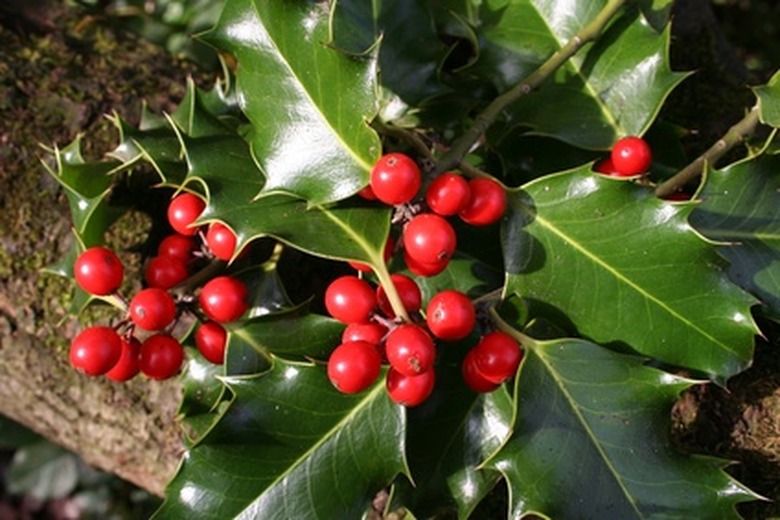Holly Bushes And Deer
We may receive a commission on purchases made from links.
The need for a permanent solution to "the deer problem" usually begins when people wander out into their yards to discover that these garden trespassers have mowed down some beloved shrubs. Browsers rather than grazers, deer are happy to sample whatever looks, smells, and tastes good.
Unfortunately, there isn't a permanent solution. "Deer-proof" plants don't exist, and even deer-resistant ones can disappoint. Holly, though, is a good garden choice for deterring deer since the leaves are rough and the berries can be toxic to them.
'Deer-Resistant' Plants?
'Deer-Resistant' Plants?
It's just not possible to make a landscape deer-proof. Deer will eat anything, even toxic plants, if they're hungry enough. Still, you can successfully develop a deer-resistant landscape by growing plants they don't generally like and will only eat as a last resort.
Deer generally dislike aromatic or pungent plants, including those that have milky sap or a bitter taste. They avoid plants with sharp thorns and spines or prickly, fuzzy, or woolly leaves. Deer develop local and regional preferences, sometimes contrary to deer-resistant plant lists.
Deer-Resistant Landscapes
Deer-Resistant Landscapes
Landscaping will stand up to deer better over time if you develop an overall deer-management strategy. Provide sumptuous deer meals — plants deer love — at the outer edge of your property, for example, and then landscape with deer-resistant shrubs and other plants.
Protect vulnerable garden areas closer to the house with deer fencing or deer-resistant hedges. This is an excellent use for holly, and you can even grow your own plants from cuttings. Use deer repellent for extra discouragement.
Hollies to Consider
Hollies to Consider
Hollies, both tree and shrub varieties, are frequently included on deer-resistant plant lists. But some hollies resist deer better than others. American holly (Ilex opaca) is very effective at fending off deer. This native plant can be grown either as an evergreen shrub or as a tree that can reach 30 feet in height.
Also top-rated for deterring deer are the two "Morris" hollies — John T. Morris and Lydia Morris, tall shrubs named after the benefactors of the Morris Arboretum in Philadelphia, Pennsylvania.
There are several popular shrub-type hollies that are rated "seldom severely damaged" by deer. These include Chinese holly, English holly, inkberry, and winterberry holly. Hollies that are "sometimes severely damaged" and not as well-suited to deter deer are blue holly, Japanese holly, and Perny holly.
Using Holly in the Landscape
Using Holly in the Landscape
Hollies can tolerate some shade, but plant them in full sun for the best berry production. American holly and the John T. Morris and Lydia Morris hollies can be grown and pruned as attractive evergreen hedges — very tall hedges, if desired — or used in the landscape as small trees or specimen shrubs. Transplant with care since hollies have both taproots and lateral roots.
Plant male and female American hollies if you fancy the red, berrylike fall fruit that birds love. Plant both Morris varieties for the same reason. Hollies are dioecious, meaning that plants are either male or female, and you need both for berry production.
